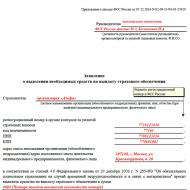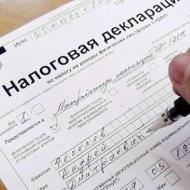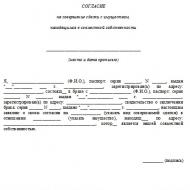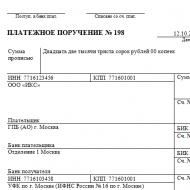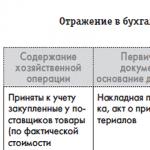
Comparative characteristics of the regions of Eastern Europe. Population of Eastern Europe. Brief description of the largest states in the region. Western Europe has the slowest population growth rate in the world
General economic and geographical characteristics of the countries of Eastern Europe.
Eastern Europe as a historical and geographical region includes Poland, the Czech Republic, Slovakia, Hungary, Romania, Bulgaria, Albania, Yugoslavia, Croatia, Slovenia, Macedonia, Bosnia and Herzegovina. The region is a single territorial area, the countries are connected to each other by iron, highways, power lines. All have a transit position.
Until recently, the countries were united by belonging to the socialist economic system and there were stable and diverse economic ties between them; their economies were closely connected with each other and with the USSR. Currently, these ties have weakened, some have completely ceased. All countries strive to cooperate with Western partners. The economies of the countries that were previously republics of the SFRY were largely damaged by military operations that ended quite recently.
Countries are provided with mineral resources in different ways: the main reserves of coal are in Poland and the Czech Republic, oil and gas - in Romania, hydro resources - in the Balkan countries, iron ore - in Romania and Slovakia, copper - in Poland, Romania, Bulgaria, bauxite - in Hungary, sulfur and potassium salts - in Poland and Romania. Population and National composition countries are different. Albania has the highest natural increase. The most urbanized country is the Czech Republic.
The economies of the countries are diverse. Industrial centers of European scale - Upper Silesia in Poland, Ostrava-Karvina basin in the Czech Republic.
The electric power industry of Eastern European countries is focused on coal. Hydropower is of great importance. Non-ferrous metallurgy developed in Poland, Bulgaria, and Hungary. Mechanical engineering has different specializations: the Czech Republic - machine tools, household appliances, Poland and Romania - equipment for heavy industry, metal-intensive mechanical engineering, Hungary and Bulgaria - electrical engineering. Chemical industry is developing in Poland and Hungary, where petrochemistry has replaced coal chemistry. Hungary is the largest producer of chemical and pharmaceutical products.
Agriculture is intensive. In Poland, rye and wheat occupy a large place in the crops; in Hungary, Romania, and Bulgaria, significant areas are occupied by orchards and vineyards, and corn crops are large. Bulgaria ranks first in the world in the production of rose oil, obtained from the oil-bearing rose grown in the country.
The northern and central countries of Eastern Europe specialize in dairy and meat and dairy cattle breeding, pig breeding, while the southern countries specialize in mountain pasture farming. In countries where there are areas with a Mediterranean climate, subtropical crops are grown - olives, figs, citrus fruits.
The basis of transport is railways. Developing at a fast pace automobile transport. The most important waterway is the Danube.
The recreational sector is represented by the following resorts: Karlovy Vary (Czech Republic), Zakopane (Poland), Golden Sands (Bulgaria), Balaton (Hungary), and resorts on the Adriatic.
The countries of Eastern (Central) Europe received socio-political and economic integrity in the early 90s of the twentieth century. This is due to the collapse former USSR and the socialist system, the formation of independent states. The region covers 10 countries.
The economic-geographical position (EGP) of Eastern Europe is distinguished by the following features:
Demarcation in the west with highly developed countries, and in the east and southeast - with Russia and the countries of South-Eastern Europe - potential markets for Eastern Europe;
Passage of trans-European transport routes of meridional and latitudinal directions through the region. The first of them connect the Scandinavian countries and Finland with the countries of the Danube basin and Southern Europe, and the second provide a connection between the east and west of the continent;
Central position between the west and east of the European massif of countries;
Access to the seas (Baltic, Black and Azov), which provides direct benefits for transport and trade relations;
The large extent of the region's territory from north to south, diversity natural conditions, which significantly affects the specialization of agriculture, the geological and tectonic structure of the territory - the placement various types mineral raw materials.
Over the past 15 years, the region’s EGP has been significantly influenced by the following events on the political map of the world:
Collapse of the USSR, formation of independent states;
Unification of Germany;
The collapse of Czechoslovakia, resulting in the formation of two independent states: the Czech Republic and Slovakia;
The appearance on the southern borders of “unstable” neighbors in terms of the military-political situation - the Balkan countries.
Second half of the 80s. entered the history of these countries as a period of radical socio-political changes. In Poland, Hungary, Czechoslovakia, the GDR, Bulgaria, and the USSR, the political regimes introduced after the Second World War, modeled on the Stalinist administrative-command system, collapsed. The ruling communist and workers' parties, one after another, lost their monopoly on power, most of them collapsed.
Political and socio-economic changes influenced the formation of modern political map Of Eastern Europe. As a result of the collapse of the USSR, such independent states were formed in the region: Latvia, Lithuania, Estonia, Belarus, Ukraine, and Russia. A new political and economic association arose - the Commonwealth of Independent States (CIS). The Baltic countries were not included in it.
In the process of profound revolutionary changes, the countries of Eastern Europe entered a period of political and economic reforms, actively asserting the principles of real democracy, political pluralism (multi-party system), market economy. A multi-structured economy is developing with equal forms of property, including private property, the institution of civil society is being formed, and there is a tendency to take into account disparate economic, political, national and cultural interests various groups population.
Thanks to these processes, a number of countries in the region experienced such changes of an economic and socio-political nature that allowed them to become equal members of the EU and join the military-political NATO bloc.
All countries in the region are members of the UN. Russia, Ukraine and Belarus are in the CIS. The EU and NATO include Estonia, Latvia, Lithuania, Poland, Slovakia, Hungary, and the Czech Republic.
Population size. On the territory of Eastern Europe, excluding Russia, there are 128.2 million people, including the European part of Russia - 271 million. The largest population is in Ukraine and Poland. In other countries it ranges from 1.3 to 10.2 million people.
Demographic features. Demographic situation is quite complex, due to the consequences of the Second World War, the growth of urbanization and the associated industrial development of states.
As in most other European countries, natural population growth has decreased significantly in recent decades, primarily due to a sharp decline in the birth rate. Apart from Slovakia (+0.15%), natural growth in all countries in the region was negative and ranged from -0.06% in the Czech Republic and Belarus to -0.67% in Latvia and -0.64% in Estonia. The size of the young population is declining - the birth rate is lower than the death rate, which has led to the aging process of the nation. The number of senior citizens has increased noticeably age groups(65 years and over), which is 16%, but the share of young people (under 14 years old) is decreasing - 14% of the total population. The gender composition of the population is dominated by women (53%).
Racial composition. Among the inhabitants of the region, representatives of the transitional (Central European) group of the Caucasian race predominate, with moderately intense skin pigmentation, varied eye colors (blue, gray, green, brown), hair of all shades: from blond to dark chestnut and black. In the north of the European part of Russia and on the coast of the Baltic Sea, groups of northern Caucasians live, which are distinguished by significant depigmentation of the skin, eyes and hair. In the area of the Kola Peninsula in Russia, small groups of Sami live, who belong to the transitional Laponoid race, which developed during the long-term interaction of northern Caucasoids and Mongoloids.
Ethnic composition. Countries should be largely heterogeneous ethnic composition. In many of them, Russians predominate among national minorities, for example in Latvia (34%), Estonia (30%), Ukraine (22%), Belarus (12%), Lithuania (9%). In other countries: Hungarians - in Slovakia, Roma - in Hungary and Slovakia, Slovaks - in the Czech Republic. The only mononational country is Poland, where Poles make up 98.5% of the population, and the most multinational country is the Russian Federation, on whose territory more than 100 nationalities live.
The population belongs predominantly to two language families: Indo-European - the most numerous, as part of the Slavic group (Russians, Ukrainians, Belarusians, Poles, Czechs, Slovaks) and the Baltic group (Latvians, Lithuanians) Ural, represented by the Finno-Ugric group (Hungarians, Estonians).
Religious composition. The region is dominated by Christianity, represented in all directions: Catholicism is professed in Poland, the Czech Republic, Slovakia, Lithuania, and a significant number of Hungarians and Latvians; Orthodoxy - in Ukraine, Russia, Belarus; Protestantism (Lutheranism) - in Estonia, the majority of Latvians and some Hungarians: Western Ukrainians and Western Belarusians belong to the Uniate (Greek Catholic) Church.
Population distribution. The population is distributed relatively evenly. The average density is almost 46.5 individuals/km2, the maximum is in the Czech Republic (129 individuals/km2), high rates (more than 100 individuals/km2) are observed in Poland, Slovakia, Hungary, the minimum is in the European part of Russia (33 individuals/km2 ) and Estonia (28 os/km2). The Arctic islands have no permanent population.
The level of urbanization is low - an average of 67%. The maximum indicators are in the Czech Republic (74%), Russia (73%), Belarus (71%), Estonia (71%), the minimum are in Poland (62%) and Slovakia (58%). The urban population is constantly increasing.
The region has a very dense network of urban settlements, most of which have existed for several centuries. Unique not only for Poland, but also for Europe as a whole is the Upper Silesian agglomeration (3.4 million people), which makes up a continuous urban development with more than 30 cities and workers' settlements within the Upper Silesian coal basin. The center of the agglomeration is the city of Katowice. The vast majority of urban residents are concentrated in metropolitan agglomerations: Moscow (12.1 million people), Kiev (3.4 million people), Budapest (2.6 million), Warsaw (2.3 million), Minsk (1 , 7 million), as well as in large industrial areas: Kharkov (2 million people), Donetsk-Makeevsk (1.95 million), Nizhnonovgorod (1.9 million), Dnepropetrovsk-Dneprodzerzhinsk (1.7 million) , Samara (1.5 million) and others. Large agglomerations on the territory of the CIS countries require certain restrictions on further growth and industrial development and strict adherence to social and environmental standards.
The urban lifestyle is largely characteristic of rural areas Western countries region (Czech Republic, Slovakia, Poland, Hungary). Rural population has a different type of settlement: group (villages) - in the center, south and east of the region; farmstead - in the Baltic states and Poland. Villages in northern Russia are predominantly small, often consisting of several households. They are located in river valleys at considerable distances from each other.
Labor resources. They number almost 121.8 million people. Industry employs 40-50% of the working population, in agriculture- 20-50%, in the non-production sector - 15-20%. Due to the transition to market relations in most countries, the number of unemployed has increased significantly, amounting to an average of 5-10% of economic active population(in Slovakia - 11.7%, Czech Republic - 8.9%, Estonia - 7.9%, Russia - 7.6%, Lithuania - 4.8%, Ukraine - 3.1%, Belarus - 1.6% ).
Since the mid-90s. In the countries of Eastern Europe, economic emigration of the population in search of work and permanent income has increased significantly. Migration within the region from eastern regions(Ukraine, Russia, Belarus) in the economically developed Western countries of the region - Poland, Czech Republic, Hungary.
It is generally accepted to distinguish four regions within Europe: Northern, Southern, Western and Eastern. Eastern European countries are more different low level economic development than their western neighbors on the continent. However, they have preserved their cultural and ethnic identity much better. What countries are included in the Eastern European region?
Eastern Europe: the problem of identifying the region
The issue of European regionalization is quite problematic. It should be noted right away that Eastern Europe is, first of all, a historical and cultural region, and not a geographical one. Indeed, by territorial standards, the eastern part of Europe can only include open spaces Russian Federation. And the geographical center of Europe is completely within Ukraine.
Let's try to list all the countries of Eastern Europe. In this matter, too, not everything is so simple, since Eastern Europe is the most problematic in the process of regionalization. Germany, for example, is definitely not one of them. But a country like Belarus is included, and according to all existing regional maps.
Today there are several classifications. For example, according to one of them, only Russia, Ukraine and Belarus are included in the Eastern European region. The two most problematic regions are the Baltic states and the Balkans. Some geographers believe that the Balkan and Baltic countries should be included in this region, while others are confident that they “do not belong” there.
It is worth noting interesting feature in the process of regionalization of Europe: all states of the Eastern European region previously belonged to the so-called Eastern Bloc of states. These are the countries that, after the end of World War II, one way or another fell under the influence of the USSR.
Eastern Europe: countries, list
It is interesting that before the outbreak of World War II, geographers drew the border between Eastern and Western Europe clearly along the line of demarcation between the Germanic and Slavic nations.
Today the most popular is the regionalization of Europe from the UN Statistics Division. According to this international organization, 10 countries on this moment are part of the Eastern Europe region. The countries (listed below) of this region are ranked by the size of the population that lives in each of them:
- European part of Russia (capital - Moscow).
- Ukraine, Kyiv).
- Poland Warsaw).
- Romania (Bucharest).
- Czech Republic, Prague).
- Hungary (Budapest).
- Belarus, Minsk).
- Bulgaria (Sofia).
- Slovakia (Bratislava).
- Moldova, Kishinev).
Almost all countries of Eastern Europe, with the exception of Hungary, Romania and Moldova, are Slavic states. Let's pay special attention to some of them.
Czech Republic - tourist mecca of the region
The Czech Republic is a small state in the very center of Europe with a population of ten million inhabitants. Has no access to the seas. The basis of the economy of this country is the metallurgical industry, chemical complex and mechanical engineering. It is here that the famous European automobile company Skoda, founded back in 1895, is located.

The Czech Republic is the country with the most developed tourism in the region. Tourists here are attracted by ancient and beautiful cities, architecture and museums of old Prague, as well as stunning ski resorts. In addition, the Czech Republic is also considered the beer capital of Europe!
Poland - a country of storks and castles
Poland is a state in Eastern Europe with a rich history and a huge number of monuments. It is the "most Catholic" country in Europe. About 39 million people live here, 85% of whom profess Catholicism. Until quite recently, Poland was in deep economic crisis. However, in the 90s of the twentieth century, reforms were successfully carried out in the country, and today Poland is one of the most dynamically developing countries in Europe.

Delicious national cuisine, beautiful brick Gothic architecture, hundreds of well-preserved castles - this is what makes Poland very attractive for tourists and travelers.
Romania is the most mysterious country in Eastern Europe
When talking about Eastern Europe, one cannot fail to mention Romania. This mountainous country has always attracted attention with its mystery and mysticism. After all, it was here, in Transylvania, that the legendary Count Dracula lived, and Romania today successfully uses this moment to attract tourists to the country.

Romania's economy is largely dependent on oil. And how does the country extract this natural resource, and produces high-quality equipment for oil industry. Income from tourism is also growing every year. Since the early 2000s, exports to Romania have been steadily increasing, but the state remains in dire need of investment.
Finally...
Thus, the countries of Eastern Europe today are ten independent states. All of them are very colorful, original and have preserved the richest cultural heritage on their lands.
The video lesson allows you to get interesting and detailed information about the countries of Eastern Europe. From the lesson you will learn about the composition of Eastern Europe, the characteristics of the countries of the region, their geographical location, nature, climate, place in this subregion. The teacher will tell you in detail about the main country of Eastern Europe - Poland.
Subject: Regional characteristics peace. Foreign Europe
Lesson: Eastern Europe
Rice. 1. Map of subregions of Europe. Eastern Europe is highlighted in red. ()
Eastern Europe- a cultural and geographical region that includes states located in eastern Europe.
Compound:
1. Belarus.
2. Ukraine.
3. Bulgaria.
4. Hungary.
5. Moldova.
6. Poland.
7. Romania.
8. Slovakia.
In the post-war period, the industry actively grew and developed in all countries of the region, with non-ferrous metallurgy relying mainly on its own raw materials, and ferrous metallurgy on imported ones.
The industry is also represented in all countries, but is most developed in the Czech Republic (primarily machine tool manufacturing, production of household appliances and computer equipment); Poland and Romania are distinguished by the production of metal-intensive machines and structures; In addition, shipbuilding is developed in Poland.
The chemical industry of the region lags far behind that of Western Europe due to the lack of raw materials for the most advanced branches of chemistry - oil. But we can still note the pharmaceuticals of Poland and Hungary, the glass industry of the Czech Republic.
Under the influence of scientific and technological revolution, significant changes occurred in the structure of the economy of the countries of Eastern Europe: the agro-industrial complex emerged, and specialization of agricultural production took place. It was most clearly manifested in grain farming and in the production of vegetables, fruits, and grapes.
The economic structure of the region is heterogeneous: in the Czech Republic, Slovakia, Hungary, and Poland, the share of livestock farming exceeds the share of crop farming, while in the rest the ratio is still the opposite.
Due to the diversity of soil and climatic conditions, several zones of crop production can be distinguished: wheat is grown everywhere, but in the north (Poland, Estonia, Latvia, Lithuania) rye and potatoes play an important role, in the central part of the subregion vegetable growing and horticulture are cultivated, and the “southern” countries specialize on subtropical crops.
The main crops grown in the region are wheat, corn, vegetables, and fruits.
The main wheat and corn regions of Eastern Europe were formed within the Middle and Lower Danube lowlands and the Danube hilly plain (Hungary, Romania, Bulgaria).
Hungary has achieved the greatest success in grain growing.
Vegetables, fruits, and grapes are cultivated almost everywhere in the subregion, but there are areas where they primarily determine the specialization of agriculture. These countries and regions also have their own specialization in terms of product range. For example, Hungary is famous for its winter varieties of apples, grapes, and onions; Bulgaria - oilseeds; Czech Republic - hops, etc.
Animal husbandry. The northern and central countries of the region specialize in dairy and meat and dairy cattle breeding and pig breeding, while the southern countries specialize in mountain pasture meat and wool animal husbandry.
In Eastern Europe, lying at the crossroads of routes that have long connected the eastern and western parts of Eurasia, transport system formed over many centuries. Currently the leader in terms of traffic volume railway transport, but automobile and maritime industries are also developing intensively. The presence of major ports contributes to the development of foreign economic relations, shipbuilding, ship repair, and fishing.
Poland. The official name is the Republic of Poland. The capital is Warsaw. Population - 38.5 million people, of which more than 97% are Poles. The majority are Catholics.

Rice. 3. Historical center of Warsaw ()
Poland borders Germany, the Czech Republic, Slovakia, Ukraine, Belarus, Lithuania and Russia; in addition, it borders the sea areas (zones) of Denmark and Sweden.
About 2/3 of the territory in the north and center of the country is occupied by the Polish Lowland. In the north there is the Baltic ridge, in the south and southeast - the Lesser Poland and Lublin Uplands, along the southern border - the Carpathians (highest point 2499 m, Mount Rysy in the Tatras) and the Sudetes. Large rivers - Vistula, Odra; dense river network. The lakes are mainly in the north. 28% of the territory is under forest.
Minerals of Poland: coal, sulfur, iron ore, various salts.
Upper Silesia - region of concentration industrial production Poland of pan-European significance.
Poland generates almost all its electricity at thermal power plants.
Leading manufacturing industries:
1. Mining.
2. Mechanical engineering (Poland occupies one of the leading places in the world in the production of fishing vessels, freight and passenger cars, road and construction machines, machine tools, engines, electronics, industrial equipment, etc.).
3. Ferrous and non-ferrous (large-scale zinc production) metallurgy.
4. Chemical (sulfuric acid, fertilizers, pharmaceuticals, perfumes and cosmetics, photographic products).
5. Textile (cotton, linen, wool).
6. Sewing.
7. Cement.
8. Production of porcelain and earthenware.
9. Production of sporting goods (kayaks, yachts, tents, etc.).
10. Furniture production.
Poland has a highly developed agriculture. Agriculture is dominated by crop production. The main grain crops are rye, wheat, barley, oats.
Poland is a large producer of sugar beets (over 14 million tons per year), potatoes, and cabbage. The export of apples, strawberries, raspberries, currants, garlic, and onions is important.
The leading branch of livestock farming is pig farming, dairy and beef cattle breeding, poultry farming (Poland is one of Europe's largest suppliers of eggs), and beekeeping.
Homework
Topic 6, P. 3
1. What are the features of the geographical location of Eastern Europe?
2. Name the main areas of specialization in Poland.
Bibliography
Main
1. Geography. A basic level of. 10-11 grades: Textbook for educational institutions / A.P. Kuznetsov, E.V. Kim. - 3rd ed., stereotype. - M.: Bustard, 2012. - 367 p.
2. Economic and social geography of the world: Textbook. for 10th grade educational institutions / V.P. Maksakovsky. - 13th ed. - M.: Education, JSC "Moscow Textbooks", 2005. - 400 p.
3. Atlas with a set of outline maps for grade 10. Economic and social geography of the world. - Omsk: FSUE "Omsk Cartographic Factory", 2012. - 76 p.
Additional
1. Economic and social geography of Russia: Textbook for universities / Ed. prof. A.T. Khrushchev. - M.: Bustard, 2001. - 672 p.: ill., map.: color. on
Encyclopedias, dictionaries, reference books and statistical collections
1. Geography: a reference book for high school students and applicants to universities. - 2nd ed., rev. and revision - M.: AST-PRESS SCHOOL, 2008. - 656 p.
Literature for preparing for the State Exam and the Unified State Exam
1. Thematic control in geography. Economic and social geography of the world. 10th grade / E.M. Ambartsumova. - M.: Intellect-Center, 2009. - 80 p.
2. The most complete edition typical options real tasks of the Unified State Exam: 2010. Geography / Comp. Yu.A. Solovyova. - M.: Astrel, 2010. - 221 p.
3. The optimal bank of tasks for preparing students. Unified State Exam 2012. Geography: Tutorial/ Comp. EM. Ambartsumova, S.E. Dyukova. - M.: Intellect-Center, 2012. - 256 p.
4. The most complete edition of standard versions of real Unified State Examination tasks: 2010. Geography / Comp. Yu.A. Solovyova. - M.: AST: Astrel, 2010. - 223 p.
5. Geography. Diagnostic work in the Unified State Exam format 2011. - M.: MTsNMO, 2011. - 72 p.
6. Unified State Exam 2010. Geography. Collection of tasks / Yu.A. Solovyova. - M.: Eksmo, 2009. - 272 p.
7. Geography tests: 10th grade: to the textbook by V.P. Maksakovsky “Economic and social geography of the world. 10th grade” / E.V. Baranchikov. - 2nd ed., stereotype. - M.: Publishing house "Exam", 2009. - 94 p.
8. Textbook on geography. Tests and practical assignments in geography / I.A. Rodionova. - M.: Moscow Lyceum, 1996. - 48 p.
9. The most complete edition of standard versions of real Unified State Examination tasks: 2009. Geography / Comp. Yu.A. Solovyova. - M.: AST: Astrel, 2009. - 250 p.
10. Unified State Exam 2009. Geography. Universal materials for preparing students / FIPI - M.: Intellect-Center, 2009. - 240 p.
11. Geography. Answers on questions. Oral examination, theory and practice / V.P. Bondarev. - M.: Publishing house "Exam", 2003. - 160 p.
12. Unified State Exam 2010. Geography: thematic training tasks / O.V. Chicherina, Yu.A. Solovyova. - M.: Eksmo, 2009. - 144 p.
13. Unified State Exam 2012. Geography: Model exam options: 31 options / Ed. V.V. Barabanova. - M.: National education, 2011. - 288 p.
14. Unified State Exam 2011. Geography: Model exam options: 31 options / Ed. V.V. Barabanova. - M.: National Education, 2010. - 280 p.
Materials on the Internet
1. Federal Institute of Pedagogical Measurements ().
2. Federal portal Russian Education ().

